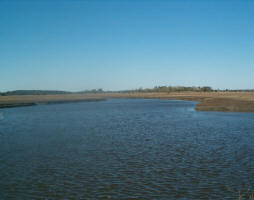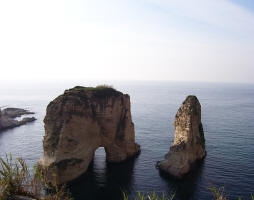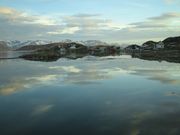 Spanish earthquake triggered by groundwater pumping
Spanish earthquake triggered by groundwater pumping
An earthquake that killed nine people in Lorca, Spain, last year could have been triggered by groundwater being drained from the area for use in irrigation, according to scientists. The study found that the ground moved in the same places as subsidence has been occurring since the 1960s, due to the extraction of groundwater.
In Europe, earthquakes are most common in southern and Mediterranean regions, from Portugal across Spain and Italy towards Greece. The magnitude 5.1 Lorca earthquake on 11 May 2011 killed nine people and injured hundreds. As part of their study, researchers from Canada, Italy and Spain analysed satellite data for the Lorca region and developed models incorporating groundwater drainage to try to understand if drainage could have contributed to the earthquake.
The results suggest that the earthquake was due to movements of the Earth’s crust at unusually shallow depths of around 2-4 kilometres, and link the earthquake to a change in weight caused by the removal of groundwater from aquifers in the nearby Alto Guadalentin region.
Lorca is situated above the Alhama de Murcia fault line, so an earthquake is likely to have occurred eventually, even without draining – the last earthquake of a similar magnitude was in the 19th century. However, it is thought the removal of water caused it to happen earlier. In the Alto Guadalentin region, groundwater levels dropped by 250 metres in the half century between 1960 and 2010 due to groundwater extraction. The ground here has been subsiding at a rate of 10 centimetres a year.
According to the researchers, their study is the first to find an association between weight on the Earth’s crust and the movements of tectonic plates that lead to earthquakes. They say their findings could be used to help improve earthquake prediction elsewhere and indicate that human activities could be modified to reduce the risk of earthquakes.
Water management plans due for implementation under the EU’s Water Framework Directive aim to ensure a balance between groundwater removal and replenishment.1 However, groundwater abstraction limits are set by Member States and groundwater abstraction volumes vary. In 2009, Spain had one of the highest rates of groundwater removal in Europe. In that year, Spain, France and Germany each extracted more than 5700 million cubic metres of water from underground sources.2 Greece, which is also earthquake prone, extracted over 3600 million cubic metres. Data are not available for Italy or Portugal. Elsewhere, groundwater removal was generally below 800 million cubic metres.
- See: http://europa.eu/legislation_summaries/agriculture/environment/l28002b_en.htm
- See: http://epp.eurostat.ec.europa.eu/statistics_explained/index.php/Water_statistics
Source: González, P.J. Tiampo, K.F.,Palano, M.,Cannavo, F., Fernandez, J. (2012). The 2011 Lorca earthquake slip distribution controlled by groundwater crustal unloading. Nature Geoscience. 5(11): 821–825. DOI: 10.1038/ngeo1610.
Contact: pgonzal4@uwo.ca
| Contact information |
González, P.J. Tiampo, K.F.,Palano, M.,Cannavo, F., Fernandez, J. (2012). The 2011 Lorca earthquake slip distribution controlled by groundwater crustal unloading. Nature Geoscience. 5(11): 821–825. DOI: 10.1038/ngeo1610.
(email: pgonzal4@uwo.ca) |
|---|---|
| News type | Inbrief |
| File link | n/a |
| Source of information | EUROSTAT / González, P.J. Tiampo, K.F.,Palano, M.,Cannavo, F., Fernandez, J. (2012). The 2011 Lorca earthquake slip distribution controlled by groundwater crustal unloading. Nature Geoscience. 5(11): 821–825. DOI: 10.1038/ngeo1610. |
| Keyword(s) | groundwater pumping, earthquake |
| Subject(s) | HYDRAULICS - HYDROLOGY , INFORMATION - COMPUTER SCIENCES , MEASUREMENTS AND INSTRUMENTATION , METHTODOLOGY - STATISTICS - DECISION AID , NATURAL MEDIUM , RISKS AND CLIMATOLOGY |
| Relation | http://europa.eu/legislation_summaries/agriculture/environment/l28002b_en.htm |
| Geographical coverage | Spain |
| News date | 21/12/2012 |
| Working language(s) | ENGLISH |
 you are not logged in
you are not logged in





